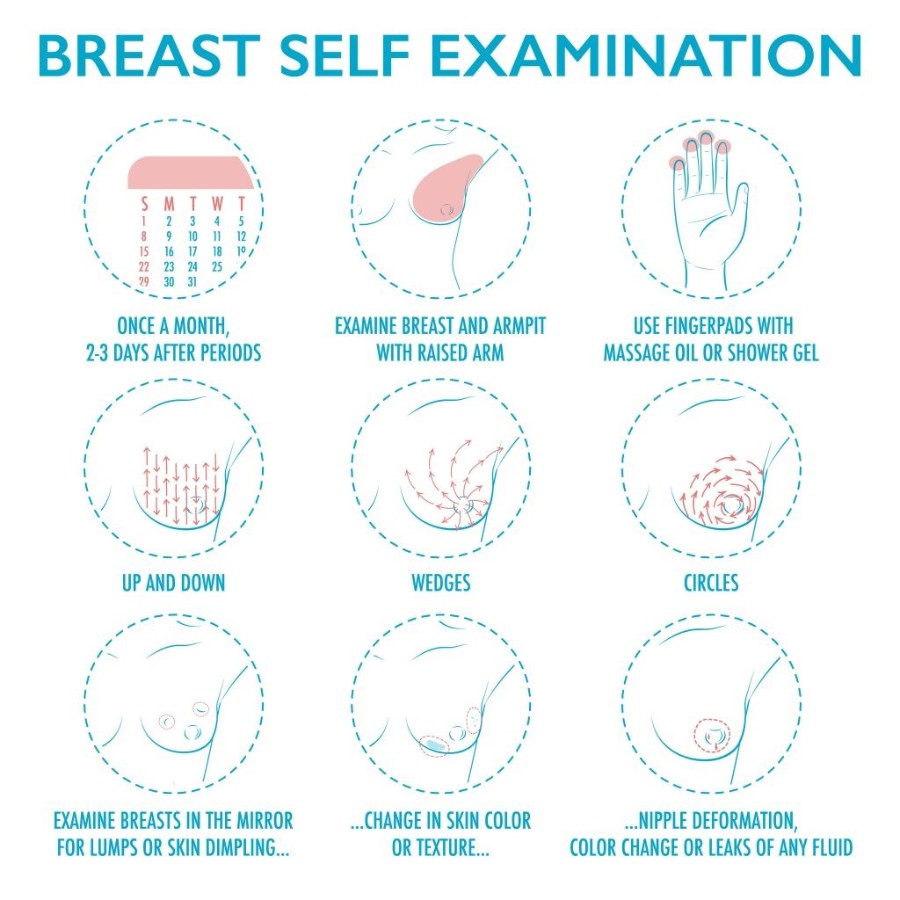
Breast Self-Exam Guide
To all the women out there: no one knows your breasts like you do! Although breast cancer can’t be prevented, getting to know your breasts can help you know if/when there are any changes so you can alert your doctor[1].
According to Johns Hopkins, 40% of breast cancer diagnoses are based on women who feel a lump, so self-exams and breast self-awareness is vital [2].
Not sure what to look for? Follow the infographic and steps below:
-
Most medical experts recommend checking your breasts once a month, ideally just at the end of your menstruation cycle or a couple of days after your periods have ended. This time of the month is usually best because breasts are the least tender and hormonal changes have the least effect on breast tissue. Try and repeat the self-exam at the same time every month so you’ll be better able to notice any changes[2].
-
Look for & notify your doctor if you discover any of the following [3]:
- Dimpling or bulges on the breast
- A nipple that has changed position or is inverted (pushed inward instead of sticking out)
- Redness, soreness, rashes, or unusual swelling of the breast
- Discharge from the nipples
-
Examine your breasts in the shower first; this will be the easiest since skin will be slick. Use different motions with your fingertips (circular, up & down, etc.) to check for any lumps of changes. Look for lumps in your armpit as well.
-
Perform the same test while lying down so you can get a handle on how your breasts feel in different positions[2].
Remember that self-exams are not a replacement for other breast cancer screening methods, such as mammograms. While mammograms can detect breast cancer before you may even feel a lump, self-exams can keep you aware of what’s normal for you and your breasts[1].
Don’t panic if you find any lumps either; while most women can develop lumps in their breast from time to time, the good news is most tend to be non-cancerous (benign) and due to hormonal changes[3]. Nevertheless, it’s always better to be safe and know your body to avoid any future complications!
References:
1. Breast Self-Exam [Internet]. National Breast Cancer Foundation, Inc. 2019 [cited 18 June 2020]. Available from: https://www.nationalbreastcancer.org/breast-self-exam
2. Johns Hopkins Breast Center: Breast Self-Exams [Internet]. Johns Hopkins Medicine. [cited 18 June 2020]. Available from: https://www.hopkinsmedicine.org/breast_center/treatments_services/breast_cancer_screening/breast_self_exam.html
3. Boraas M, Gupta S. Breast Self-Exam [Internet]. Breastcancer.org. 2019 [cited 18 June 2020]. Available from: https://www.breastcancer.org/symptoms/testing/types/self_exam


